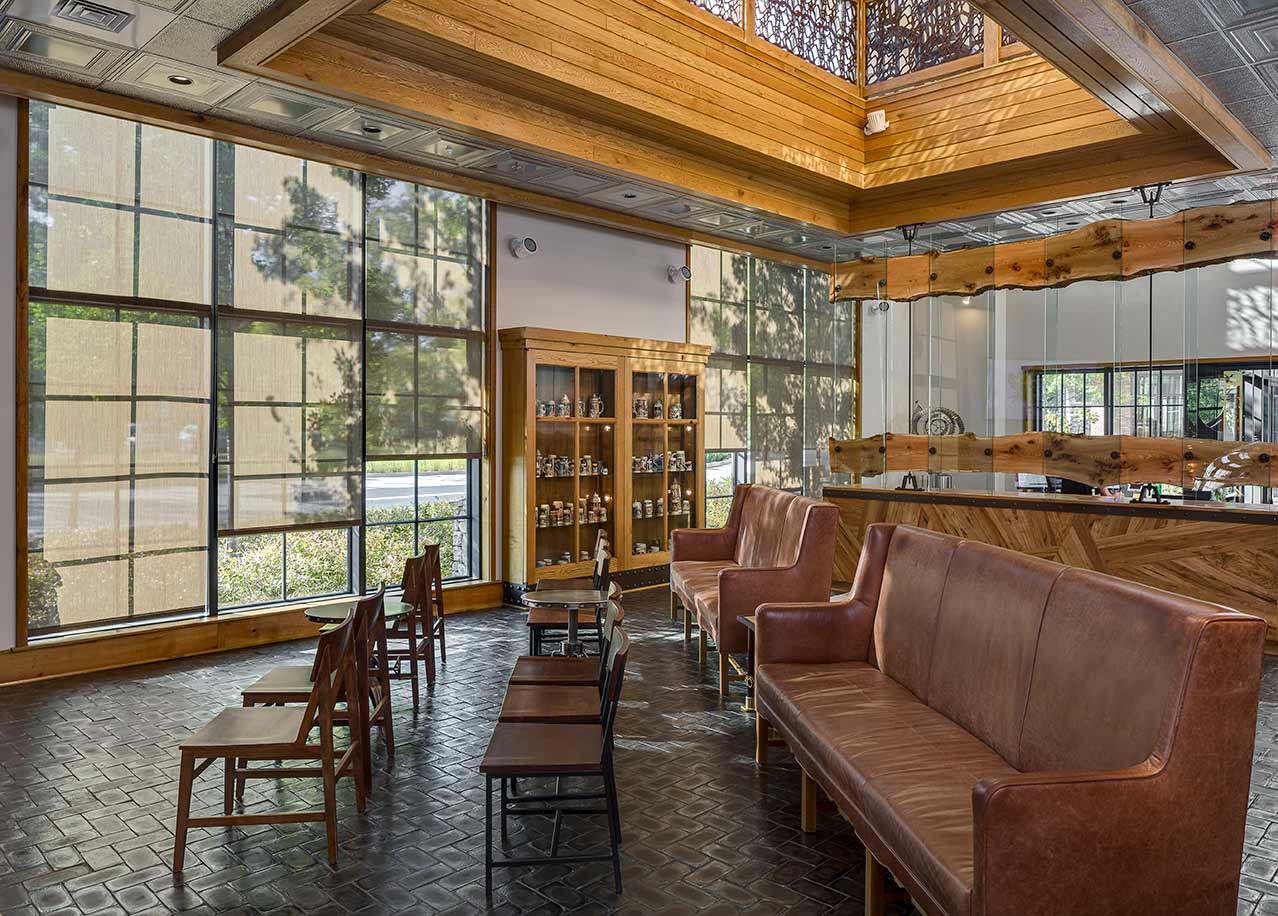
In terms of sunlight control, thermal performance, and occupant comfort, Mermet’s shade fabric M Screen Deco 5% was a well-crafted solution for the extensive Sierra Nevada Mills River Brewery project. Photo: Kris Decker & Firewater Photography
Mermet USA’s Director of Strategy and Innovation Colin Blackford explores the latest in shade.
Here’s what we learned:
- The type of window determines how much light is transmitted and reflected.
- The amount of sunlight that makes it through a window determines the recommended fabric weave and composition.
- Black fabrics reduce glare, as opposed to lighter materials.
- The less a fabric re-radiates, the more comfortable you’ll feel if you’re nearby.
- Shades significantly block solar energy.
Before selecting a shade, we at Mermet USA suggest you ask yourself: What am I looking to achieve? In other words, why am I putting up a shade in the first place?
To help answer this question, consider the three main benefits that drive shade installation: thermal performance, aesthetics, and comfort.
You can achieve all three of these to some extent, but by determining your number one priority, you’ll be in a better position to choose the right shade and hardware to meet your needs.
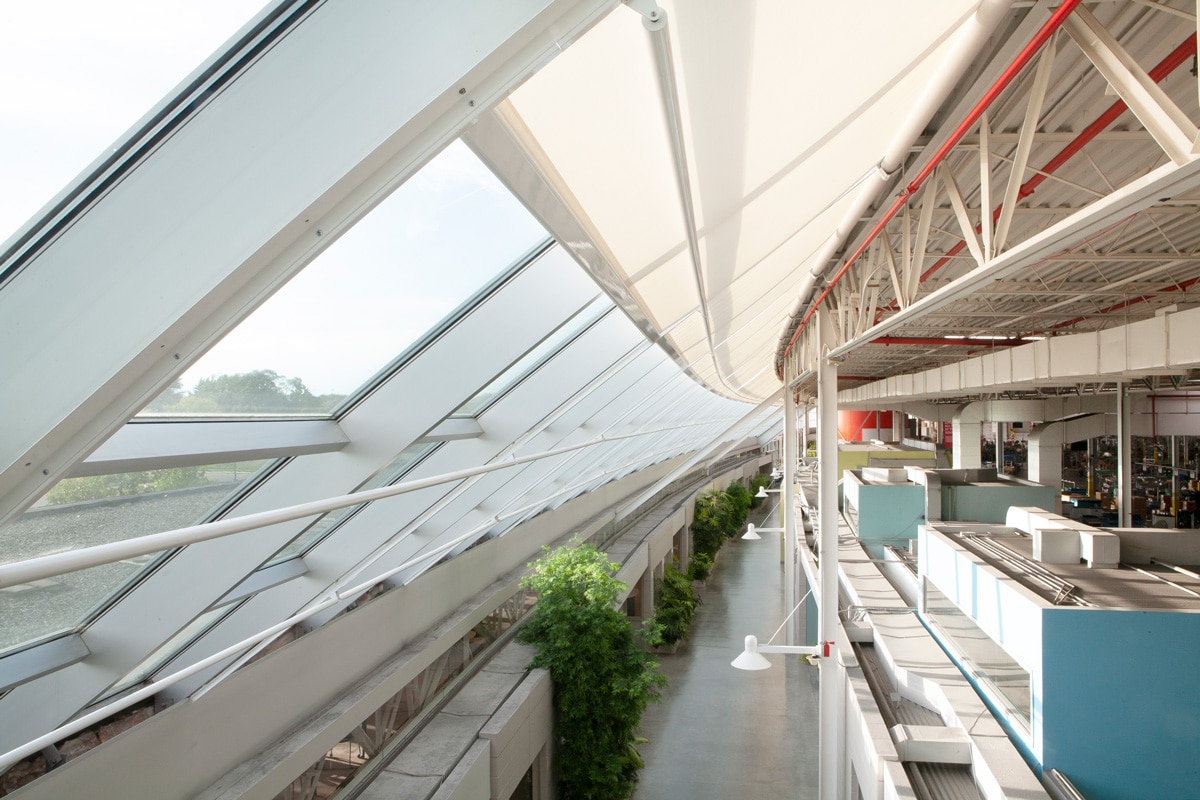
Mermet, the global leader in Sun Control Textiles, offers a wide range of fabrics that offer energy-saving benefits and aesthetic appeal. Photo: Barry Rustin
What to Ask Before Specifying Shades
Is this project in a home? Office? Medical facility? Each has different needs.
In a shared space, people don’t tend to own their environment as much as they would in their home. Manual shades may remain untouched in an office, even if the space would be better climate-controlled if they were pulled down. In that case, an automated or smart solution may be the wisest choice.

Lutron Electronics completed the ASID’s Washington, D.C. headquarters with Mermet’s QS motorized shades and GreenScreen Evolve fabric. Photo: Eric Laignel, Perkins + Will
Differences in Color Matter
Beyond whether shades are manual or automated, the color of the fabric also comes into play. Black fabrics have great view-through properties and excellent glare control. However, dark fabric absorbs the sun’s rays and that energy is re-radiated, so occupants often feel the heat.
Mermet USA has solved this problem with KOOLBLACK® Technology. On the market since 2012, KOOLBLACK Technology reflects more solar energy than previous generations of dark fabric, keeping the fabric from absorbing heat. This means you can place a desk right next to a window without worrying about excessive warmth from the shades.
White fabrics, on the other hand, don’t typically absorb and re-radiate heat as much as a darker fabric would. And the less a fabric re-radiates, the more comfortable you’ll feel if you’re seated near it.
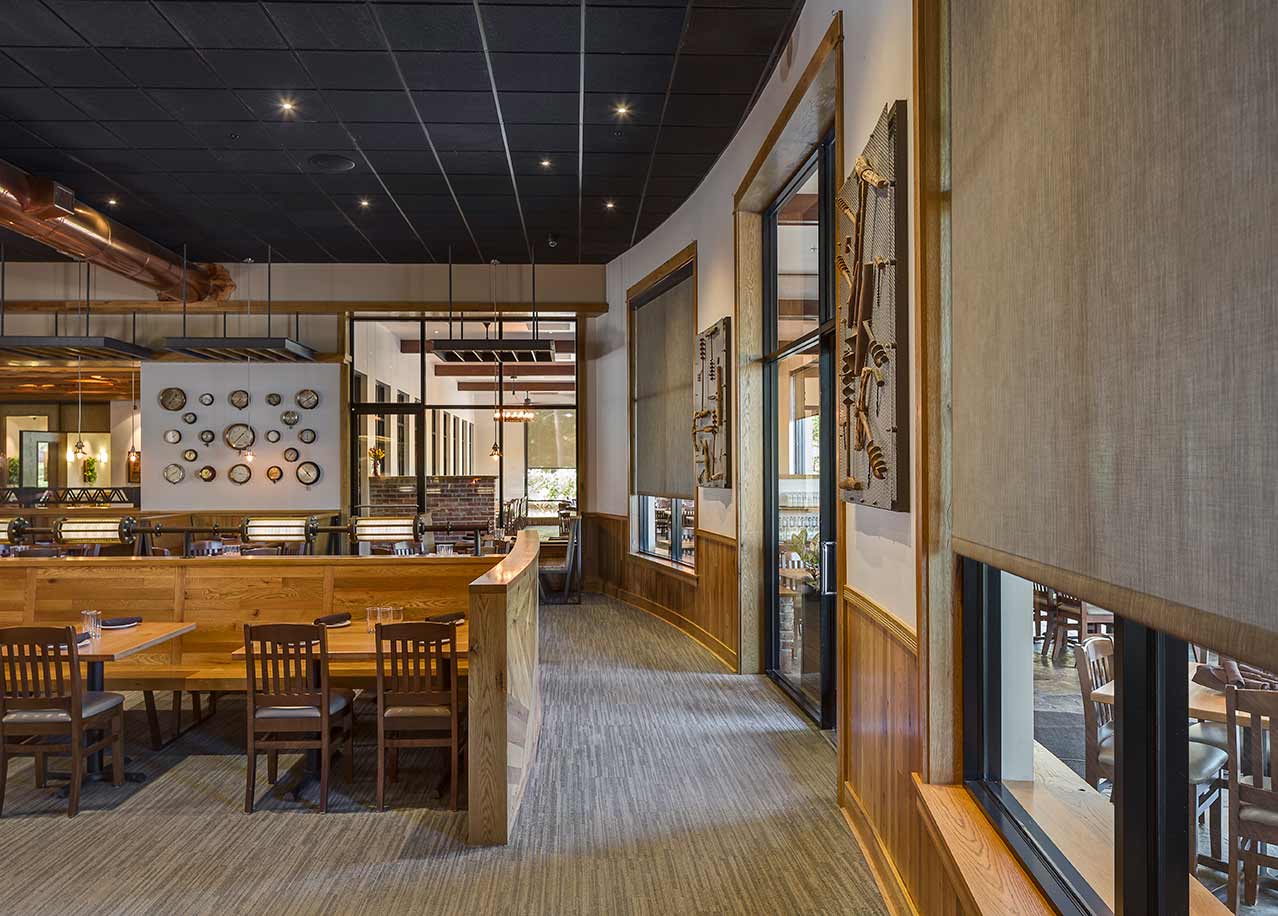
Mermet fabrics create comfortable spaces. Photo: Kris Decker & Firewater Photography
But while white shades may complement an interior design, they will also result in lots of glare.
There are, of course, next-generation fabrics that work around these generalizations, but it’s important to have a baseline of knowledge going into the selection process.
Consider this example of color gone wrong. The architect selects the perfect hue of reflective blue glazing, but you select a white or light fabric for your shades, and the glazing ends up looking greenish due to the iron content found in clear glass. That’s fine if that’s your desired effect, but if not, well, it’s less than ideal.
It’s also important to consider how the shade will appear in relation to the spandrel glass, which is the glass between floors on a large building with a full-glass facade. That portion of glass is typically back-painted with silicone or ceramic frit so you can’t see through it. Will your shades complement or clash?
By understanding your needs and working with a true professional, you can ensure you’re selecting the ideal shades for your project.
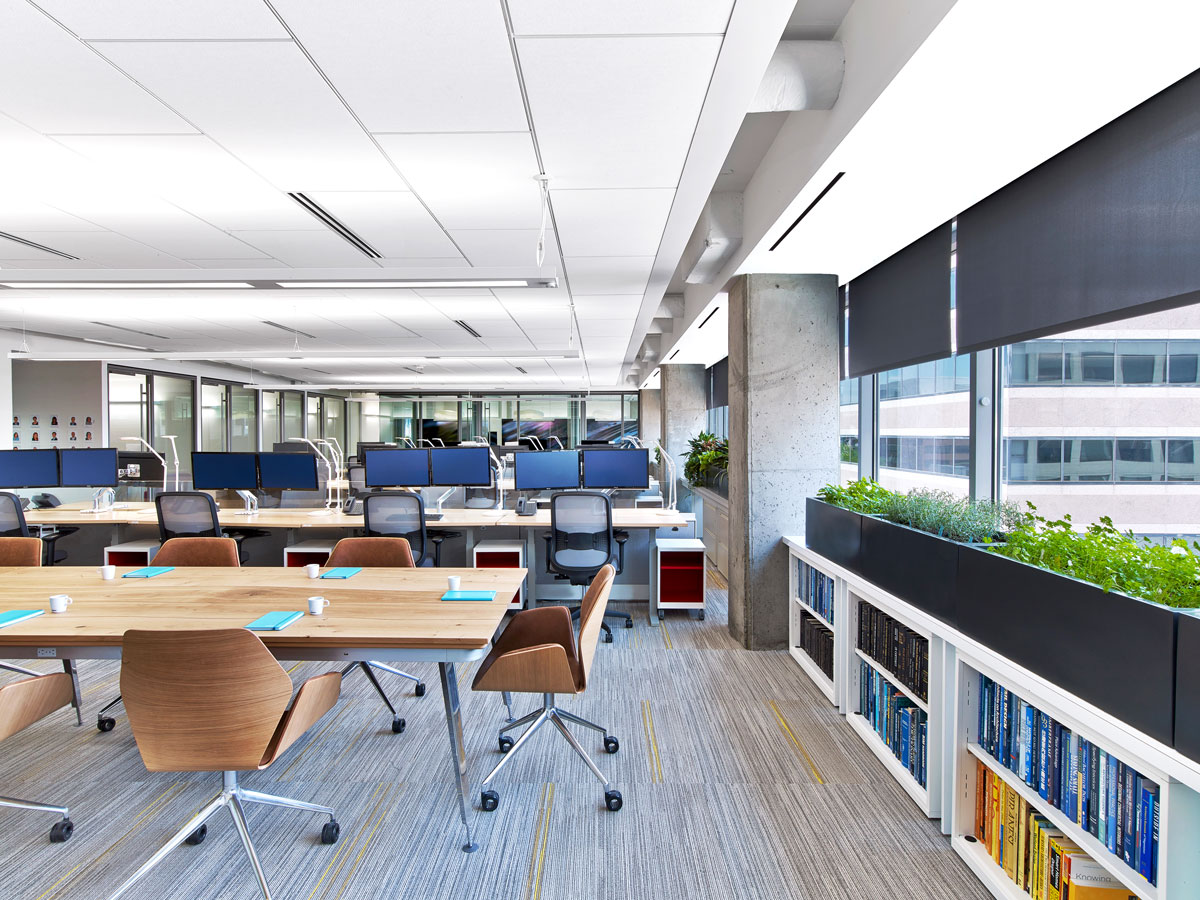
Mermet has been a global leader in manufacturing high-quality solar shade solutions for more than 40 years. The South Carolina–based company designs and manufactures innovative textiles that go into completed window shade devices. Photo: Eric Laignel, Perkins + Will
Shade Fabrics Can Improve Thermal Performance
When considering thermal performance, you have to first take into account the windows themselves.
As the first line of defense against the sun, windows will determine how much light is transmitted and reflected into the space. The shade, then, picks up where the glass leaves off in order to protect the building’s occupants from those rays.
The amount of sunlight that makes it through will determine the fabric weave and composition that’s right for the room. To ensure optimal thermal performance, you also need to consider how your shade solution works together with the windows.
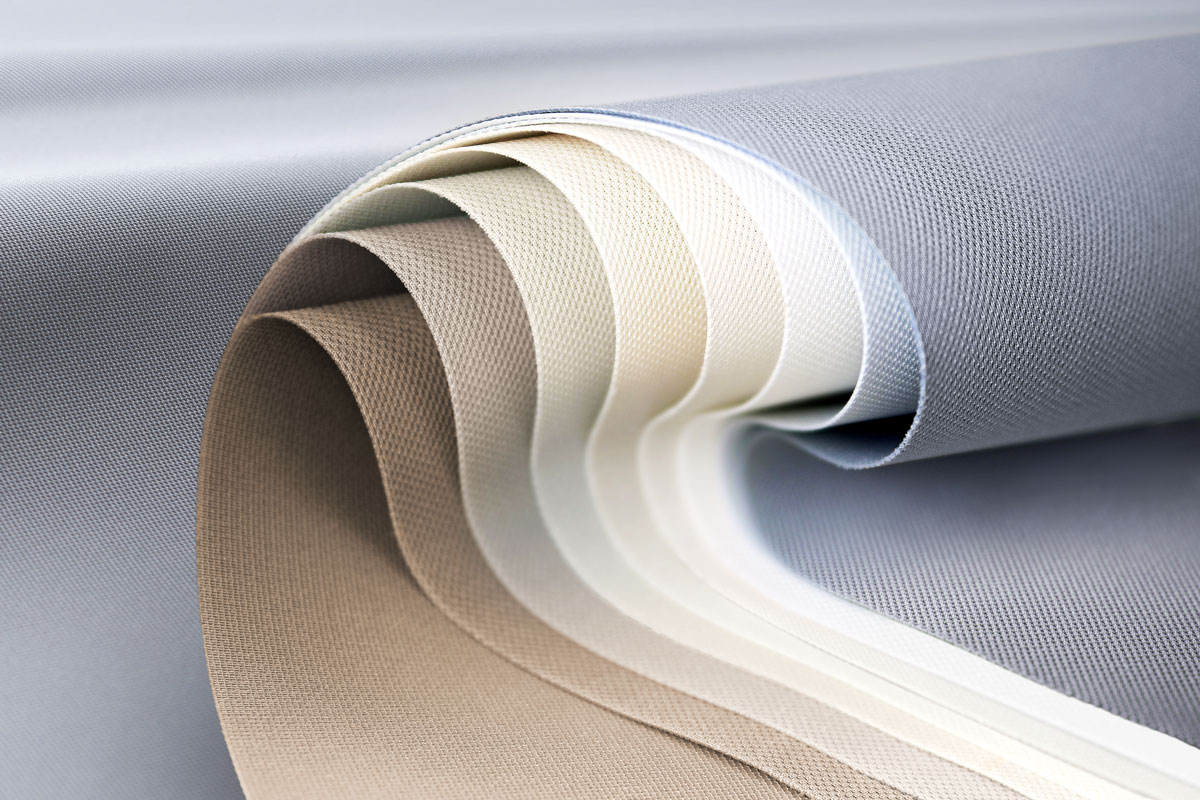
Mermet’s GreenScreen Evolve reutilizes up to 14 recycled water bottles per yard. Photo: Courtesy of Mermet
Mermet partnered with the Lawrence Berkeley National Laboratory to find out how effective windows and shades are in blocking solar energy.
The scientists used the RAT equation—which measures reflection, absorption, and transmission—to determine the combined solar heat gain coefficient of the glass and shades.
Compared to a low-e double-glazed window without a shade, the same window with a light color E Screen shade in a 3% openness factor improves the SHGC by 59%. That’s a lot less heat in your building that you then have to cool.
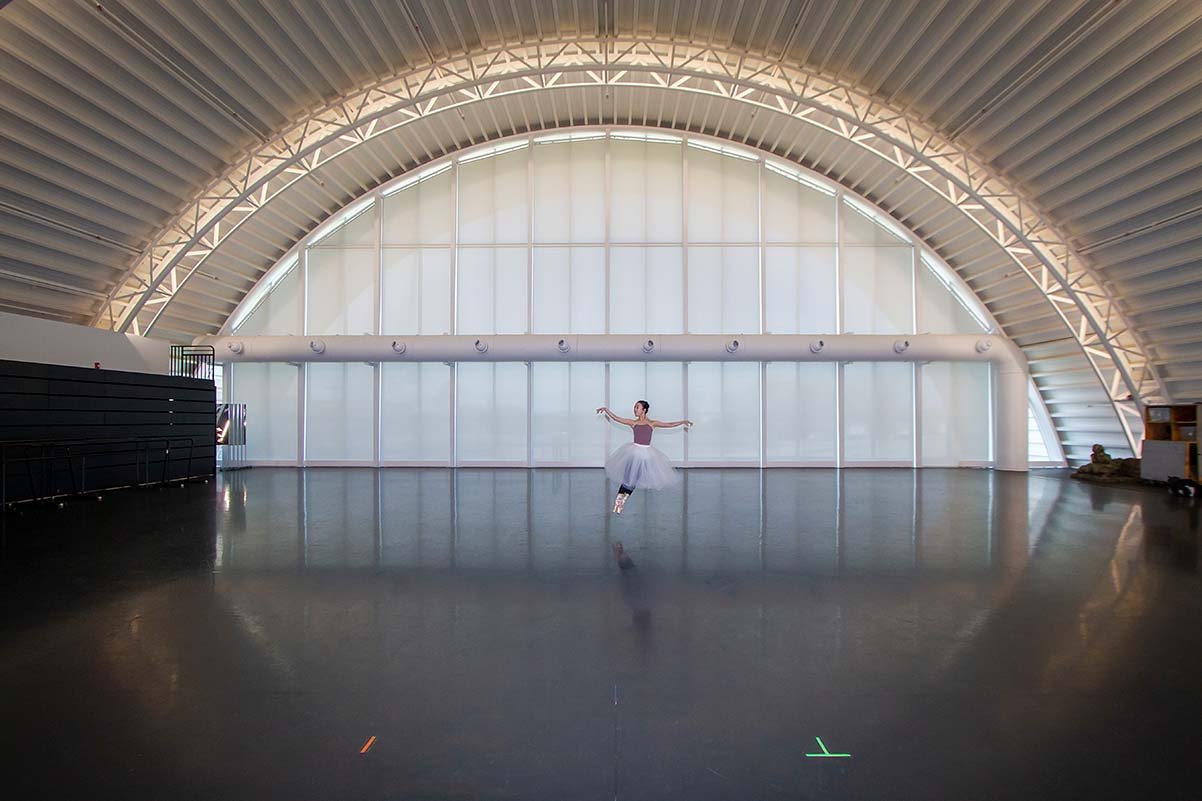
Natural light takes center stage in the Oklahoma City Ballet rehearsal space, as Hunter Douglas Architectural’s RB500 automated shades with Mermet’s E Screen 1% in white fabric filter light. At the large scale arched window, 10 high performance shades line the bottom while another 10 shades are angled along the top. These smart automated shades use sun sensor technology to lift and retract with the sun’s movement. When fully opened, the upper angled shades lower while the bottom half of the shade lift to meet in the middle, evoking a sun disappearing into the horizon. Photo: Kris Decker & Firewater Photography
Capitalize on Energy Savings
Consider the space. How much protection from the sun do you need? Is it a north-facing window? You won’t face direct sunlight, therefore, you won’t need the highest level of shading.
A standard E Screen shade is probably a great choice. If it’s a south- or west-facing one, however, you may face a constant flood of light. That will require a shade solution that blocks that energy, preventing it from heating up your room.
A high-performance fabric, such as Mermet’s KOOLBLACK Technology fabrics, can block more of those rays. The key is to put the right performance shade exactly where you need it. As with every consideration, you need to choose the one fabric, or combination of fabrics, best suited for your situation.
Tailoring your window treatments to your specific situation will result in a well-managed, energy-efficient solution.
